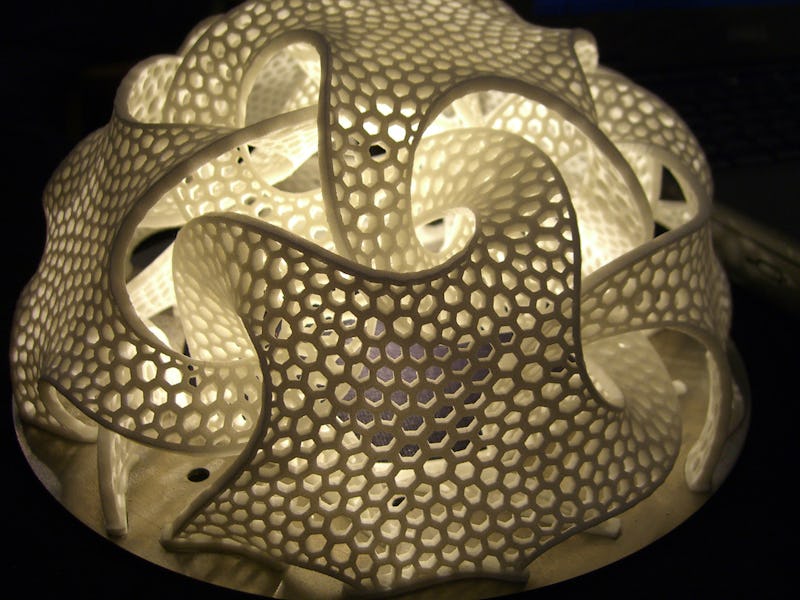Which Industries Will Be Dominated by 3D Printing?
Short answer: Pretty much anything you can touch.

The maker movement — that coalition of tinkerers — is often portrayed as a scrappy group of DIY-ers. Those people definitely exist, but there’s another side to the fabrication revolution: The race toward 3D-printed relevance is all about the money, with companies that want to disrupt the way things get built.
Here are the fields that startups are looking to disrupt with new, multi-dimensional printing tech.
1) Infrastructure
Amsterdam firm MX3D wants to automate bridge building. The Golden Gate can rest easy, for now — MX3D’s grand designs are limited to footbridges across a canal in the Netherlands. The neat bit of 3D tech here is that the construction isn’t constrained within boxes like traditional printers, allowing robot arms to trace freestanding steel lines in the air:
2) Construction
For about $161,000, you can get a 3D printed house in Shanghai. There, WinSun Decoration Design Engineering printed a five-story house out of layers of concrete and recycled garbage.
3) Poaching
You don’t often hear about San Franciscans attempting to disrupt the wholesale slaughter of charismatic megafauna, but a company called Pembient wants to do just that: By printing fake rhinoceros horns with keratin and then flooding Chinese markets (including such products as beer with ground up faux rhino horn), the biotech firm hopes to bottom out the prices of the real thing, making poaching unfeasible. Whether that will work, or just creates more demand as critics fear remains to be seen.
4) Organ Donation
We have a shortage of organ donors, and companies like San Diego-based Organovo are hoping to fill the gap with 3D printed body parts. Organovo prints living liver tissue for biological testing, and Keith Murphy, Organovo’s CEO, told Nature that liver patches are next up.
5) Spaceship Building
The world’s first 3D-printed space thruster survived a trial by fire this June. According to Airbus Defense & Space’s Steffen Beyer, the platinum-rhodium thruster, which was cheaper to manufacture than the comparable spacecraft parts, could handle 1253°C temperatures.
6) Tchotchkes
The 3D marketplace Shapeways will print you a porcelain deer mug, ensuring that you are never too far from a Pinterest-ready piece of ceramic.
7. Boardgames
One of the leaders of the mid-2000s 3D printing movement, MakerBot began shipping its DIY printer kits to consumers in 2009. The system immediately became a boon for tabletop gamers who wanted to create their own pieces. But when gamers started printing models on their MakerBots for Warhammer — a game owned by GamesWorkship — a cease-and-desist notice but the kibosh on sharing tank and walker plans via Thingiverse. Despite the legal ban, however, would-be game printers may still have a chance. As consumer rights attorney Michael Weinberg told Wired in 2012, physical objects are covered primarily under patents, not copyrights. Patents expire.